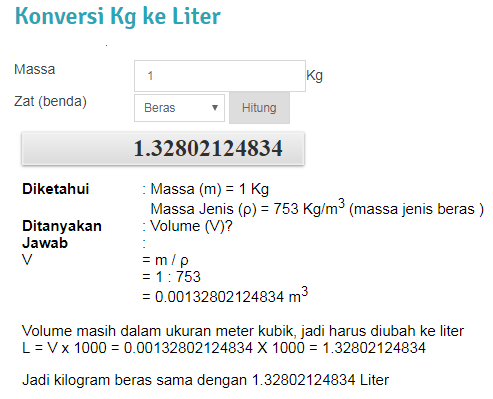Scopri The Mastery of Movement di Rudolf Laban, Lisa Ullmann: spedizione gratuita per i clienti Prime e per ordini a partire da 29 spediti da Amazon. Encuentra The Mastery of Movement de Rudolf Laban, Lisa Ullmann (ISBN: ) en Amazon. Lisa Ullmann has also compiled an Appendix on the the structure of effort, drawing largely on material from an unpublished book by Laban. The relationship between the inner motivation of movement and the outer functioning of the body is explored. Lisa Ullmann has also compiled an Appendix on the structure of effort, drawing largely on material from an unpublished book by Laban. The relationship between the inner motivation of movement and the outer functioning of the body is explored. Hello everyone Today we want to share a further quote from The Mastery of Movement of Rudolf Laban revised by Lisa Ullmann: In order to discern the mechanics of motion within living movement in which purposeful control of the physical happening is at work, it is useful to give a name to the inner function originating such movement. Laban's The Mastery of Movement on the Stage, first published in 1950, quickly came to be accepted as the standard work on his conception of human movement. When he died, Laban was in the process of preparing a new edition of the book, and so for some time after his death it was out of print. Laban, Rudolf; Ullmann, Lisa In this third edition, some amendments and additions have been made to the original text, first published in 1950. As in past editions, the relationship between the inner motivation of movement and the outer functioning of the body is explored. the mastery of movement Golden Resource Book DOC GUIDE ID 8d2395 Golden Resource Book The Mastery Of Movement The Description Of: The Mastery Of Movement the mastery of movement rudolf laban lisa ullmann on amazoncom free shipping on qualifying Lisa Ullmann has also compiled an Appendix on the the structure of effort, drawing largely on material from an unpublished book by Laban. The relationship between the inner motivation of movement and the outer functioning of the body is explored. Lisa Ullmann, who was conversant with changes Laban intended to make, then took on the task of editing each of the three subsequent editions, both adding and rewriting material. The 4 th edition currently available in paperback was originally published in 1980. See more The Mastery of Movement by Lisa Ullmann and Ru Email to friends Share on Facebook opens in a new window or tab Share on Twitter opens in a new window or tab Share on Pinterest opens in a new window or tab The mastery of movement Rudolf Laban, revised by Lisa Ullmann with a new preface by Roland Laban. You should have a rough idea of Laban's approach to movement analysis including his categories of Body, Space, Effort, and Shape, as well as his ideas about Relationships, Rhythm, and meaning. Basic understanding of these things would greatly improve your satisfaction while reading the book. [Rudolf von Laban; Lisa Ullmann Laban's The Mastery of Movement on the Stage, first published in 1950, quickly came to be accepted as the standard work on his conception of human move ment. In this third edition, some amendments and additions have been made to the original text, first published in 1950. The Mastery of Movement [Rudolf Laban, Lisa Ullmann on Amazon. FREE shipping on qualifying offers. Laban's The Mastery of Movement on the Stage, first published in 1950, quickly came to be accepted as the standard work on his conception of human movement. When he died Rudolf von Laban, Lisa Ullmann. Dance Books, 2011 Acting 196 pages. Laban's The Mastery of Movement on the Stage, first published in 1950, quickly came to be accepted as the standard work on his conception of human movement. When he died, Laban was in the process of preparing a new edition of the book, and so for some time after. The mastery of movement by Rudolf von Laban ( Book ) 85 editions published between 1960 and 2011 in 4 languages and held by 1, 583 WorldCat member libraries worldwide Buy The Mastery of Movement by Rudolf Laban, Lisa Ullmann from Waterstones today! Click and Collect from your local Waterstones or get FREE UK delivery on orders over 20. Lisa Ullmann has also compiled an Appendix on the the structure of effort, drawing largely on material from an unpublished book by Laban. The relationship between the inner motivation of movement and the outer functioning of the body is explored. The mastery of movement, Volume 1971, Part 1. Rudolf von Laban, Lisa Ullmann. Macdonald Evans, 1971 Performing Arts 190 pages. What people are saying Write a review. We haven't found any reviews in the usual places. Laban, Rudolf; revised and enlarged by Lisa Ullmann Dance Books, Alton (2011 rev. first published in 1980) Detailed Description Laban's The Mastery of Movement on the Stage, first published in 1950, quickly came to be accepted as the standard work on his conception of human movement. The Mastery of Movement (English, Paperback) Rudolf Laban. Laban's The Mastery of Movement on the Stage, first published in 1950, quickly came to be accepted as the standard work on his conception of human movement. Rudolf von Laban, also known as Rudolf Laban (Hungarian: Rezs Lbn de Vraljas, Lbn Rezs, Lbn Rudolf) (15 December 1879 1 July 1958), was a dance artist and theorist. He is considered as one of the pioneers of modern dance in Europe, as the Founding Father of the Expressionist Dance in Germany. His work laid the foundations for Laban Movement Analysis, Labanotation. Rudolf Laban is the author of The Mastery of Movement (4. 12 avg rating, 16 ratings, 2 reviews, published 2005), Laban's Principles of Dance and Movement. Born in Slovakia, Rudolf Laban was the inventor of the dancenotation system. Laban is celebrated because of his unique dancenotation system, which not only conveys notions of shape and direction but also of movement and energy levels needed to perform the movements. Lisa Ullmann has also compiled an Appendix on the the structure of effort, drawing largely on material from an unpublished book by Laban. The relationship between the inner motivation of movement and the outer functioning of the body is explored. SPEDIZIONE GRATUITA su ordini idonei Rudolf Laban, Lisa Ullmann Laban's The Mastery of Movement on the Stage, first published in 1950, quickly came to be accepted as the standard work on his conception of human movement. When he died, Laban was in the process of preparing a new edition of the book, and so for Lisa Ullmann has also compiled an Appendix on the the structure of effort, drawing largely on material from an unpublished book by Laban. The relationship between the inner motivation of movement and the outer functioning of the body is explored. Laban, Rudolf The Mastery of Movement Plymouth: Northcote House 1988 Laban, Rudolf; compiled by Lisa Ullmann A Vision of Dynamic Space London: Laban Archives in association with Falmer 1984 Laban, Rudolf A Life for Dance: reminiscences London: Macdonald and Evans 1975 Shop for Books on Google Play. Browse the world's largest eBookstore and start reading today on the web, tablet, phone, or ereader. [Rudolf von Laban; Lisa Ullmann The relationship between the inner motivation of movement and the outer functioning of the body is explored. Acting and dancing are shown as activities deeply concerned with man's urge to establish. Mastery of Movement by Laban, Rudolf. Mastery of Movement by Rudolf; Ullmann, Lisa Laban ISBN 10. Octa Seminar Mastering Rudolf Labans Mastery of Movement a sixweek correspondence course with CarolLynne Moore April 1 May 6, 2017 The Course Mastery of Movement (a. Mastery of Movement on the Stage) is Labans most complete exposition of the motion elements of. Laban movement analysis (LMA), sometimes LabanBartenieff movement analysis, is a method and language for describing, visualizing, interpreting and documenting human movement. It is based on the original work of Rudolf Laban, which was developed and extended by Lisa Ullmann, Irmgard Bartenieff, Warren Lamb and others. Lisa Ullmann has also compiled an Appendix on the the structure of effort, drawing largely on material from an unpublished book by Laban. The relationship between the inner motivation of movement and the outer functioning of the body is explored. Born in Slovakia, Rudolf Laban was the inventor of the dancenotation system. Laban is celebrated because of his unique dancenotation system, which not only conveys notions of shape and direction but also of movement and energy levels needed to perform the movements. Rudolf Laban (Rudolf von Laban, Rezs Lbn de Vraljas, Lbn Rezs, Lbn Rudolf) was a dance artist and theorist, notable as one of the pioneers of modern dance in Europe. His work laid the foundations for Laban Movement Analysis, Labanotation (Kinetography Laban), other more specific developments in dance notation and the evolution of many varieties of Laban Movement Study. Laban's The Mastery of Movement on the Stage, first published in 1950, quickly came to be accepted as the standard work on his conception of human movement. Lisa Ullmann has also compiled an Appendix on the the structure of effort, drawing largely on material from an unpublished book by Laban. The relationship between the inner motivation of movement and the outer functioning of the body is explored. Laban's The Mastery of Movement on the Stage, first published in 1950, quickly came to be accepted as the standard work on his conception of human movement. When he died, Laban was in the process of preparing a new edition of the book, and so for some time after his death it was out of print. The Mastery of Movement, Rudolf Laban, Lisa Ullmann, MacDonald and Evans, 1988, , . DOWNLOAD HERE Movement for the performing artist, James Penrod, 1974. Hello everyone: ) Today we want to share a quote from the book The Mastery of Movement of Rudolf Laban revised by Lisa Ullmann: The astonishing structure of the body and the amazing actions it can perform are some of the greatest miracles of existence. Lisa Ullmann has also compiled an Appendix on the the structure of effort, drawing largely on material from an unpublished book by Laban. The relationship between the inner motivation of movement and the outer functioning of the body is explored..











